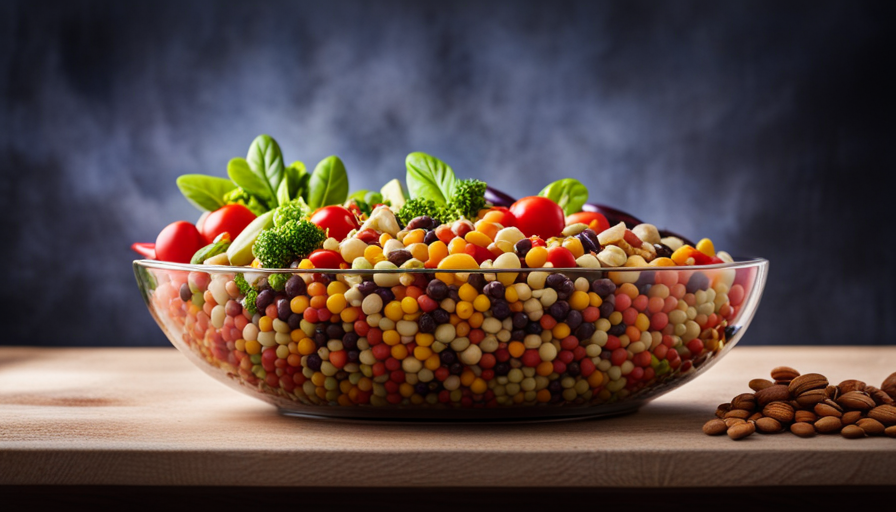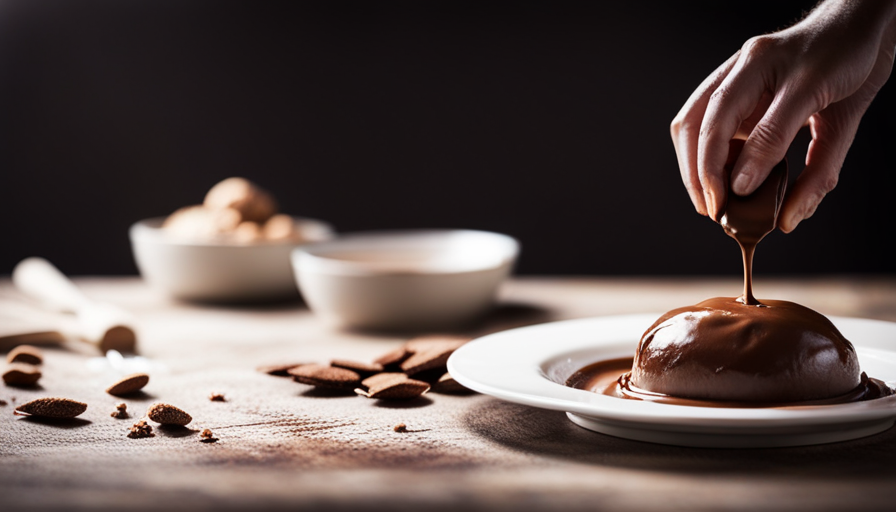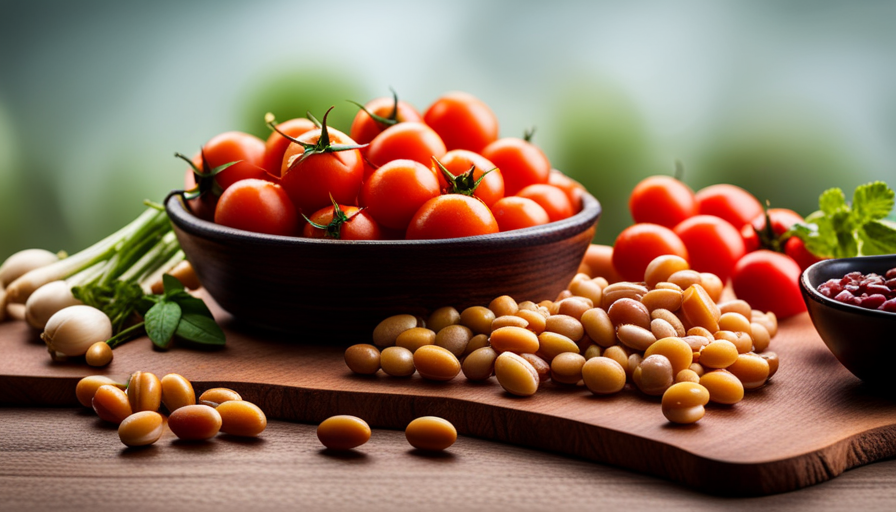Are you someone who always reaches for a glass of water after taking a bite of jalapeno? Do you envy those who can handle spiciness with ease? Fear not, with some practice and expert advice, you can become a pro at eating raw jalapenos and handle the fiery sensation like a boss.
Just like any skill, building up tolerance to spicy foods takes time and effort. By gradually increasing the spiciness in your diet and incorporating raw jalapenos into your dishes, you can train your taste buds to handle the heat.
But it’s not just about endurance; it’s also about balance. Learning how to soothe the burn with dairy or acidic components, and knowing when to take a break, are essential in mastering the art of eating spicy food.
So, get ready to ignite your taste buds and become a spice connoisseur with our guide on how to get better at eating spicy food, starting with raw jalapenos.
Key Takeaways
- Incorporating raw jalapenos into your diet can help train your taste buds to handle the heat
- Gradually increasing the spiciness in your diet can help build up your tolerance
- Pairing spicy foods with cooling ingredients like yogurt or sour cream can help soothe the heat
- Experimenting with different types of chili peppers can open up new spicy flavors and sensations
Understanding Spice Levels and Tolerance
Understanding spice levels and tolerance is essential in order to improve your ability to eat raw jalapeno. By increasing your heat tolerance, you can gradually build up your capacity to handle spicier foods. Start by incorporating mild spices into your meals, such as paprika or cayenne pepper, and gradually increase the amount over time. This will help your taste buds adjust to the heat and become more tolerant.
Another way to improve your spice tolerance is by managing your spice cravings. Instead of avoiding spicy foods altogether, try incorporating small amounts of heat into your meals regularly. This can be done by adding a dash of hot sauce or a sprinkle of crushed red pepper flakes. By exposing yourself to a little bit of spice on a regular basis, you can train your taste buds to become more accustomed to the heat.
It’s important to note that everyone’s spice tolerance is different, so it’s essential to listen to your body and go at your own pace. If you find that a certain level of spiciness is too much for you, don’t push yourself too hard. Gradually increasing your heat tolerance takes time and patience. With practice, you’ll find that you can handle more and more spicy foods, including raw jalapenos.
Gradually Increasing Spiciness in Your Diet
By slowly incorporating hotter ingredients into your meals, your taste buds will become more accustomed to the heat, creating a thrilling and fiery experience. Gradually increasing spiciness in your diet is a great way to build up your tolerance and manage the intense flavors of raw jalapenos.
Start by adding a small amount of a milder chili pepper, like a poblano or a banana pepper, to your dishes. Once you feel comfortable with that level of spiciness, you can move on to the next level.
As you continue to increase the heat, remember to listen to your body. If you start feeling uncomfortable or overwhelmed, take a step back and go back to a milder level. It’s important to find a balance that works for you and your taste buds. You can also try pairing spicy foods with cooling ingredients, like yogurt or sour cream, to help soothe the heat.
Another helpful tip is to gradually increase the amount of raw jalapeno you consume. Start by adding just a small slice to your meals, and then gradually increase the amount over time. This will allow your taste buds to adjust and build up a tolerance to the spiciness.
Overall, increasing your tolerance and managing spiciness is a gradual process. By slowly incorporating hotter ingredients into your meals and listening to your body, you can develop a stronger tolerance and enjoy the fiery experience of eating raw jalapenos.
Building up Resistance with Mild Peppers
Start gradually incorporating mild peppers into your meals to build up your resistance and spice tolerance, giving your taste buds a chance to acclimate to the heat. By starting with milder peppers, such as banana peppers or poblano peppers, you can begin to train your taste buds to handle spicier foods. These peppers provide a gentle introduction to the world of spicy flavors without overwhelming your palate.
To help you track your progress and keep yourself motivated, use the table below to document your experience with different types of mild peppers. Rate each pepper on a scale of 1 to 10, with 1 being very mild and 10 being extremely spicy. This way, you can gradually increase the heat level as you build your tolerance.
| Pepper Type | Heat Level (1-10) |
|---|---|
| Banana | 2 |
| Poblano | 3 |
| Anaheim | 4 |
| Cubanelle | 5 |
As you become more comfortable with mild peppers, you can start incorporating slightly spicier varieties, such as jalapenos or serrano peppers, into your meals. Remember to listen to your body and take it slow. Building tolerance takes time, so be patient with yourself. Eventually, you’ll be able to enjoy raw jalapenos and conquer those spicy food challenges with ease.
Properly Preparing and Handling Raw Jalapenos
Ready to dive into the world of spicy peppers? Let’s talk about how you can handle and prepare those raw jalapenos like a pro.
When it comes to spicy food, proper handling techniques are crucial. First, always wear gloves when handling jalapenos to protect your skin from the capsaicin, the compound responsible for their heat. Avoid touching your face or eyes while handling the peppers, as this can cause a burning sensation.
To properly prepare jalapenos, start by washing them thoroughly under cold water. Then, using a sharp knife, carefully remove the stem and slice the pepper as desired. Remember to discard the seeds and white membranes, as they contain the highest concentration of capsaicin and can make the pepper even hotter.
It’s important to be aware of potential health risks associated with consuming raw jalapenos. Eating too many spicy peppers can lead to stomach discomfort, heartburn, or even indigestion. If you experience any of these symptoms, it’s best to drink milk or eat yogurt to neutralize the heat.
By following these handling techniques and being mindful of potential health risks, you can confidently enjoy raw jalapenos and improve your tolerance for spicy foods. So go ahead, spice up your meals and savor the flavor of these fiery peppers!
Incorporating Raw Jalapenos into Dishes
To elevate your culinary creations, consider incorporating the fiery heat of raw jalapenos into your dishes. Raw jalapenos can add a delightful kick to a wide range of recipes, including cocktails and other creative dishes.
One unique way to incorporate raw jalapenos is by infusing them into cocktails. Simply muddle a few slices of raw jalapeno with your favorite alcohol, such as tequila or vodka, and let it sit for a few minutes to allow the flavors to meld together. Then, strain the mixture and use it as a base for your spicy cocktail. The heat from the jalapenos will add a tantalizing twist to your drink, making it a memorable and fiery experience for your taste buds.
Another creative use for raw jalapenos is to use them as a topping or garnish in various dishes. You can finely chop raw jalapenos and sprinkle them over tacos, nachos, or even salads for an extra burst of flavor and heat. Additionally, you can stuff raw jalapenos with cream cheese or other fillings, then bake or grill them for a delicious appetizer or side dish.
Incorporating raw jalapenos into your dishes not only adds a spicy kick, but it also adds a unique and exciting element to your culinary creations. So, don’t be afraid to experiment and get creative with raw jalapenos in your next meal or drink!
Pairing Spicy Foods with Cooling Ingredients
When it comes to enjoying fiery dishes, it’s all about finding the perfect balance by pairing them with cooling ingredients like creamy avocado or tangy lime juice. Pairing spicy foods with sweet ingredients can also help to balance out the heat and enhance the overall flavor experience.
For example, adding some slices of juicy pineapple or a drizzle of honey to a spicy dish can provide a refreshing contrast that makes the heat more enjoyable.
Not only can pairing spicy foods with cooling ingredients enhance the taste, but it can also have some health benefits. Spicy foods are known to have natural remedies, such as helping to clear sinuses and boost metabolism. By adding cooling ingredients like cucumber or yogurt to a spicy dish, you can further soothe the heat and provide relief for those who are more sensitive to spice.
So, next time you’re indulging in some spicy food, don’t forget to pair it with some cooling ingredients. Whether it’s a creamy avocado salsa or a squeeze of tangy lime juice, these additions will not only balance the heat but also add a delightful burst of flavor.
Experiment with different combinations and find your perfect balance of spicy and cooling ingredients. Happy eating!
Drinking Milk or Eating Dairy to Soothe the Burn
If you’re looking for a delicious and effective way to soothe the burn after indulging in some fiery dishes, try reaching for a glass of cold milk or enjoying a serving of creamy dairy products. Not only are these options tasty, but they can also provide relief from the heat of spicy food.
Milk is a popular choice for soothing the burn because it contains a protein called casein. Casein acts as a natural detergent, binding with and washing away the capsaicin compounds that cause the burning sensation. Additionally, milk also contains fat, which helps to dissolve the capsaicin and further reduce the heat.
If you’re lactose intolerant or prefer non-dairy alternatives, there are other options available to help soothe the burn. Coconut milk, almond milk, and soy milk can be effective substitutes. These alternatives may not have the same level of casein as cow’s milk, but their cooling properties can still provide relief.
It’s important to note that while milk and dairy products can help alleviate the burning sensation, they don’t actually remove the capsaicin from your mouth. It’s still important to drink water or eat bread to physically remove the spicy residue. So next time you find yourself reaching for that glass of milk after a spicy meal, know that you’re not only satisfying your taste buds but also utilizing the science behind milk’s soothing properties.
Using Citrus or Acidic Components to Balance Heat
Squeeze some fresh lemon juice over your fiery dish to add a burst of tangy flavor and balance out the heat. Citrus fruits, like lemon, lime, or orange, are excellent choices for balancing the spiciness of raw jalapenos. Their natural acidity helps to neutralize the heat, providing a refreshing and cooling sensation.
These fruits also enhance the overall taste profile of the dish, adding a zesty and vibrant element.
Incorporating other fruits can also help to balance the heat of raw jalapenos. Pineapple, for example, with its sweet and juicy flavor, can provide a pleasant contrast to the spiciness. Adding diced pineapple to your dish can create a harmonious blend of flavors.
When it comes to cooking with jalapenos, trying different techniques can make a difference in the heat level. Roasting jalapenos before using them can mellow out their spiciness, making them more palatable. You can also remove the seeds and membranes, which contain most of the heat, to further reduce the spiciness.
Using citrus fruits and other balancing ingredients, as well as experimenting with different cooking techniques, can help you enjoy raw jalapenos without being overwhelmed by the heat. So go ahead, get creative in the kitchen, and spice up your meals with confidence!
Taking Breaks and Listening to Your Body
Now that you’ve learned about using citrus or acidic components to balance the heat of raw jalapenos, let’s talk about the importance of taking breaks and listening to your body while eating spicy food.
When it comes to consuming spicy food, it’s crucial to understand your limits and manage your spice levels effectively. Taking breaks during your spicy food journey allows your taste buds to recover and prevents overwhelming heat buildup. Listen to your body and pay attention to any discomfort or signs of distress. If you start feeling overwhelmed by the spiciness, take a break and give yourself a moment to cool down.
Managing spice levels is all about finding the right balance between enjoyment and tolerability. Gradually increase your tolerance by starting with milder peppers and gradually working your way up to jalapenos. It’s essential to pace yourself and not push beyond your comfort zone too quickly.
Remember, everyone’s tolerance for spice is different, so don’t compare yourself to others. Take breaks, listen to your body, and slowly build up your tolerance over time. With practice and patience, you’ll become better at eating spicy food, including raw jalapenos.
Experimenting with Different Types of Spicy Foods
Expand your palate and explore the vast array of fiery flavors by trying different types of piquant cuisine. Experimenting with different types of chili peppers can open up a whole new world of spicy sensations.
From the mild heat of jalapeños to the intense burn of habaneros, each pepper brings its own unique flavor profile and level of spiciness.
To start your spicy journey, consider trying milder peppers like poblanos or serranos. These peppers offer a gentle kick that won’t overwhelm your taste buds. As you build up your tolerance, gradually move on to hotter varieties such as cayenne or Thai chili peppers. Each step will help you develop a stronger tolerance for spiciness and expand your spice threshold.
Additionally, consider taking on spicy food challenges. These challenges can push your limits and help you overcome the fear of eating spicy foods. Whether it’s devouring a plate of blazing hot wings or participating in a chili pepper eating contest, these challenges can be exhilarating and rewarding. They provide an opportunity to test your spice tolerance and showcase your ability to handle the heat.
By experimenting with different types of chili peppers and trying spicy food challenges, you will not only improve your ability to eat spicy food but also broaden your culinary horizons. So go ahead, embrace the heat, and embark on an exciting journey of spicy exploration.
Frequently Asked Questions
Can I eat spicy food if I have a sensitive stomach?
If you have a sensitive stomach, it’s important to be cautious when eating spicy food. Spicy foods can trigger symptoms like acid reflux and gastritis. It’s best to start with milder spices and gradually increase the heat as your tolerance improves.
Additionally, avoiding other triggers like caffeine and alcohol can help reduce stomach sensitivity. Remember to listen to your body and stop eating spicy food if it causes discomfort.
Can eating spicy food cause any long-term health problems?
Can eating spicy food cause any long-term health problems?
While it may give you a fiery kick, you might wonder about its impact on your cardiovascular health and if it leads to any long-term effects.
Spicy foods themselves do not directly cause long-term health problems. However, if you have underlying heart conditions, consuming excessively spicy foods may temporarily increase your heart rate or blood pressure.
It’s important to listen to your body and consult a healthcare professional if you have concerns.
How do I determine the spiciness level of a jalapeno before eating it?
To determine the spiciness level of a jalapeno before eating it, there are a few things you can look for. First, observe the color – a green jalapeno tends to be milder than a red one. Additionally, the size and shape can be indicators, with smaller and smoother jalapenos often being less spicy. If you’re still unsure, you can cut a small piece and taste it. Remember, if it’s too spicy for your liking, there are milder alternatives like bell peppers or poblano peppers to try instead.
Can eating spicy food have any negative effects on my digestion?
Eating spicy food can indeed have negative effects on your digestion. The capsaicin in spicy foods can irritate the lining of your stomach, leading to symptoms like heartburn and indigestion. It can also increase the production of stomach acid, which can further worsen these symptoms. However, if you gradually build up your tolerance to spicy foods, your stomach may become more accustomed to them over time, reducing any negative impact on your digestion.
Are there any potential risks or side effects of eating raw jalapenos?
There are potential risks and side effects of eating raw jalapenos. They contain a compound called capsaicin, which can cause stomach irritation, heartburn, and even stomach ulcers in some individuals. It’s important to consume jalapenos in moderation and be aware of your tolerance level. The recommended serving size is typically one small jalapeno pepper per day. However, it’s always best to listen to your body and consult with a healthcare professional if you have any concerns.
Despite these potential risks, jalapenos also offer potential health benefits, such as boosting metabolism and reducing inflammation.
Can Eating Raw Jalapenos Help with Transitioning to a Raw Food Diet?
Transitioning to a raw food diet can be challenging, but adding raw jalapenos to your meals can help. Jalapenos are a great source of vitamins and minerals, and their spicy flavor can make raw dishes more enjoyable. Incorporating spicy foods like jalapenos is one of the many raw food diet tips to add variety to your meals.
Conclusion
In conclusion, you can become a pro at eating spicy food, even raw jalapenos, by following these steps:
- Gradually increase your tolerance.
- Build resistance with milder peppers.
- Properly handle jalapenos.
- Incorporate them into your dishes.
- Balance the heat with dairy or citrus components.
- Take breaks and listen to your body’s signals.
- Don’t be afraid to experiment with different types of spicy foods to expand your palate.
So, go ahead and spice up your life with confidence and gusto! After all, practice makes perfect.










